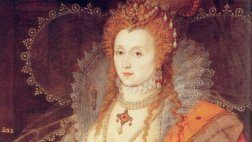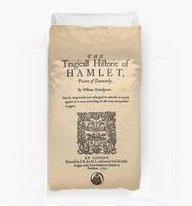 CHECK OUT YOUR FREE
CHECK OUT YOUR FREE
SAMPLE ESSAY BELOW

Check out your free
sample essay below

Essay introduction /
Thesis statement
“A prince out of thy star”
“Still better, and worse”—Ophelia’s words to Hamlet in 3.2 carry a poignant echo of traditional marriage vows. As does Hamlet’s reply: “So you must take your husbands.”
However, the play in which they find themselves is not a romantic comedy but a tragedy in which the two characters are exploited by their manipulative parents.
Hamlet’s uncle-father and ghost-father trap the prince in contradictory male roles of obedient subject to a tyrant (“Am I a coward?”, 2.2) and murderous, hell-bound avenger (“Now could I drink hot blood”, 3.2).
Ophelia’s only parent Polonius successively casts her into the opposing female stereotypes of coy maiden (“Think yourself a baby”, 1.3) and then seductive temptress (“Ophelia, walk you here …”, 3.1).
Neither Hamlet nor Ophelia is free to follow the advice given to Laertes: “To thine own self be true” (1.3).
SHARE THE SHAKESPEARE
#Hamlet and Ophelia: a relationship of "purposes mistook / Fall'n on th' inventors' heads."
1
Hamlet’s wooing of Ophelia
“I do not know what to think”
Ophelia reports in 1.3 to her cynical-about-love father (“Affection! Pooh”) that Hamlet “hath importuned me with love / In honorable fashion.” Yet the prince also wanted to return to the life he loved at Wittenberg University, and stays at Elsinore only on the royal command of King Claudius: “remain / Here in the cheer and comfort of our eye” (1.2).
Moreover, how plausible is it that the “inky cloak” (1.2) wearing Hamlet could at the same time be in the grip of a deep depression (“all the uses of this world … weary, stale, flat, and unprofitable”, 1.2) and under the spell of romantic love (“almost all the holy vows of heaven”, 1.3)?
We the audience may well wonder with Ophelia: “I do not know, my lord, what I should think” (1.3).
SHARE THE SHAKESPEARE
Prince #Hamlet professes love for Ophelia, yet also wishes to leave Elsinore.
2
Hamlet’s insanity and Ophelia’s guilt
“Mad for thy love?”
After Hamlet’s “doublet all unbraced” (2.1) visit to her closet, Ophelia worries her father’s interpretation of the prince’s behavior (“Mad for thy love?”) may be correct (“My lord, I do not know. / But truly, I do fear it.”) and that her rejection of him has driven insane the prince on whom depends “The safety and health of this whole state” (1.3).
Hamlet intends his closet visit to “let belief take hold” (1.1) that her denial of his love is the cause of “the madness wherein now he raves” (2.2).
His other purpose is to ensure her safety; by pushing the “so affrighted” (2.1) Ophelia away from him, he seeks to ensure she is not punished as a co-conspirator in the event of a failed overthrow of the usurping “dread lord” (1.2) King Claudius.
SHARE THE SHAKESPEARE
Prince #Hamlet's attitude towards 'fair Ophelia' is both exploitative and protective.
3
Hamlet, Ophelia and the nunnery scene
“No more marriages”
Having exposed his two old schoolfriends as spies serving the king and queen (“Were you not sent for? … Come, come, deal justly with me”, 2.2), Hamlet naturally reacts with suspicion on suddenly encountering the woman who for two months has shunned his company.
Is it only obedience to her father that motivates Ophelia to collude in the “’twere by accident” (3.1) scheme to “sift” (2.2) Hamlet? Or, by encouraging the prince to recall his past love for her (“words of so sweet breath composed”, 3.1), does she also hope to rekindle it?
The prince responds with an abusive and self-contradictory rant—against women, men and himself (“I am very proud, revengeful, ambitious”, 3.1). And in his “it hath made me mad” rage he blurts out his murderous intention regarding the eavesdropping king: “Those that are married already, all but one, shall live.”
SHARE THE SHAKESPEARE
Ophelia tries and fails to trap Prince #Hamlet into revealing his past love for her.
4
Hamlet and Ophelia: two truth-tellers
“Dangerous conjectures”
Hamlet, through theater, and Ophelia, through the symbolic language of flowers, each exposes Elsinore’s dark secret: that the king and queen owe their position to a secret murder followed by politically convenient marriage.
“What means this, my lord?” (3.2), Ophelia asks about The Murder of Gonzago. “It means mischief” is the reply of the prince whose play reenacts his father’s murder and mother’s hasty remarriage. Similarly, Ophelia’s later distribution of fennel and columbine to Claudius and Gertrude conveys very specific messages that highlight the guilt of their recipients.
Polonius demands Gertrude discipline her son for his “pranks” (3.4). Horatio cautions Gertrude that Ophelia’s traumatized outbursts “may strew/ Dangerous conjectures in ill-breeding minds” (4.5).
SHARE THE SHAKESPEARE
#Hamlet through theater and Ophelia through flowers each expose the dark secrets of the Danish court.
5
Essay conclusion / Summary
“All trivial fond records”
Ophelia’s surrender to death in a “weeping brook” (4.7) recalls Hamlet’s earlier despairing wish that his “flesh would … resolve itself into a dew” (1.2). Moreover, her death leads to Hamlet’s, for it is at her grave that the prince challenges Laertes: “I will fight with him upon this theme … I loved Ophelia” (5.1).
Elsinore is a world where the old literally destroy the young. The self-serving motives of Hamlet’s and Ophelia’s parents lead inevitably to their children’s deaths. The play cannot end with the marriage of Hamlet and Ophelia because of the “mirth in funeral” (1.2) wedding of the prince's “uncle-father and aunt-mother” (2.2) that is celebrated at its beginning.
In an “unweeded garden” (1.2) poisoned by deceit and betrayal, the story of the unwed couple of Hamlet and Ophelia ends in Elsinore’s graveyard.
SHARE THE SHAKESPEARE
Like Ophelia, did Prince #Hamlet go to his death "se offendendo" - in his own defense?
6
The most helpful book ever for students and teachers of Shakespeare’s Hamlet.
42 x 1,500-word model essays

Chapter-by-chapter guide to Hamlet Model Essays
IN THIS BOOK ARE THREE 1,500-WORD SAMPLE ESSAYS ON EACH ONE OF THE FOLLOWING 14 CHARACTERS, RELATIONSHIPS, AND THEMES. THAT’S 42 SAMPLE ESSAYS IN TOTAL.

#1: The Character of Hamlet
Born a prince, parented by a jester, haunted by a ghost, destined to be killed for killing a king, and remembered as the title character of a play he did not want to be in. If at the cost of his life, Hamlet does in the end “win at the odds.”

#2: The Character of Claudius
His “ambition” for Denmark’s crown leads him to commit one murder only to find that he must plot a second to cover up the first. When this plan fails, his next scheme leads to the death of the woman he loves followed by his own.

#3: The Character of Gertrude
“Have you eyes?”, Prince Hamlet demands of his mother. Gertrude‘s “o’erhasty marriage” dooms her life and the lives of everyone around her when her wished-for, happy-ever-after fairytale ends in a bloodbath.

#4: The Character of Ophelia
As she struggles to respond to the self-serving purposes of others, Ophelia’s sanity collapses in Elsinore’s “unweeded garden” of falsity and betrayal. Her “self-slaughter” is her revenge for her silencing and humiliation.

#5: Relationship of Hamlet and the Ghost
Hamlet grants the Ghost the atonement his suffering soul needed more than the revenge he demanded: he surrenders Denmark to the son of the man murdered by his father on the day of the prince’s birth.

#6: Relationship of Hamlet and Claudius
Uncle and nephew are two men at war with each other—and themselves. Claudius is haunted by the murder he has committed (“O heavy burden!”); Hamlet by the one he hasn’t yet (“Am I a coward?”).

#7: Relationship of Hamlet and Gertrude
A haunted-by-the-past Hamlet seeks the truth about his father’s death (“Do you see nothing there?”). A live-in-the-present Gertrude seeks to protect her second husband and crown (“No, nothing but ourselves”).

#8: Relationship of Hamlet and Ophelia
Their relationship begins in uncertainty, descends into mutual deceit and rejection, and ends with their double surrender to death: Ophelia, to the water; Hamlet, to Claudius’ rigged fencing duel.

#9: Relationship of Hamlet and Horatio
“Those friends thou hast … Grapple them unto thy soul with hoops of steel.” Horatio is Hamlet’s trusted confidant in life and vows to remain the keeper of his memory after the prince’s death.

#10: Relationship of Claudius and Gertrude
A marriage of mutual self-interest: Claudius wanted to become king; Gertrude wanted to remain queen. In the end, both die by the same poison her second husband used to murder her first.

#11: Main Themes of Hamlet
A king murdered, an inheritance stolen, a family divided: Elsinore’s older generation destroys its younger when two brothers—one living, one undead—battle in a “cursed spite” over a crown and a queen.

#12: The Theme of Revenge
Hamlet and Laertes journey from revenge, through obsession and anger, to forgiveness. And the revenge sought by the Ghost on King Claudius becomes the revenge of Old King Fortinbras on Old King Hamlet.

#13: Deception and Appearance versus Reality
“Who’s there?” The characters struggle to distinguish between truth and falsehood in a play-long triple pun on the verb ‘to act’: to take action, to behave deceitfully, and to perform in theater.

#14: The Theme of Madness
“Your noble son is mad”, Polonius tells Denmark’s king and queen. But is Hamlet ever really insane? If not, why is he pretending to be? And is the prince’s “antic disposition” the cause of Ophelia’s traumatic breakdown?
















